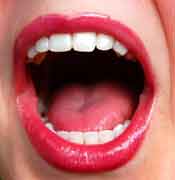 Applying for Social Security Disability benefits is a complicated battle for people with headache disorders. The process can last years and rulings often go against the patient. One reason for this is that the Social Security Administration’s official criteria to qualify for benefits does not include headache disorders as potentially disabling.
Applying for Social Security Disability benefits is a complicated battle for people with headache disorders. The process can last years and rulings often go against the patient. One reason for this is that the Social Security Administration’s official criteria to qualify for benefits does not include headache disorders as potentially disabling.
The Social Security Administration is currently revising the criteria for neurological disorders. Despite urging from several members of Congress and the Alliance for Headache Disorders Advocacy, the administration has said they will not include any headache disorders in the revised criteria. Without this inclusion, people who are disabled by headache disorders will continue having to fight for years and through numerous appeals for benefits they may not ultimately receive.
You have until April 28, 2014 to help change this. Write the Social Security Administration TODAY on the neurological revisions comment page. Submitting your comment directly to the administration is the most effective action you can take, but you can also voice your support by signing this petition. And please ask anyone you know who cares about someone who is disabled by a headache disorder to submit a comment to the administration.
Want to learn more? Read Speak Out for Migraine & Social Security Disability Today by patient advocate and lawyer Diana Lee.
Note: Be sure to leave your comment on the Social Security Administration’s website, not as a comment on this The Daily Headache post. While I always appreciate your comments, only those submitted through official government channels will count.
